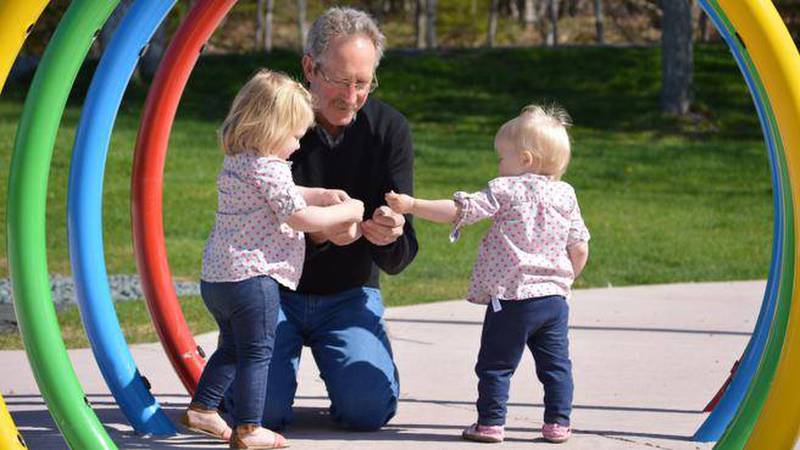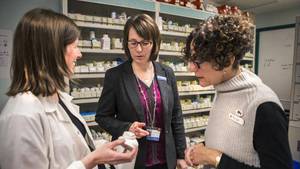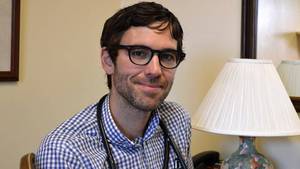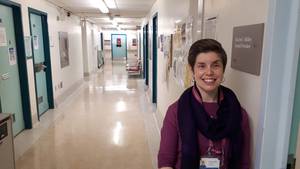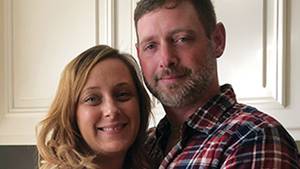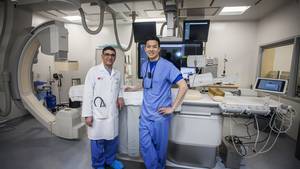Hearing a loon’s call echo across the lake, the joyful laughter of his six grandchildren, or even the tick tock of his office clock are all magical sounds to Gary Dunbrack.
After decades of suffering from his hearing loss, Gary received a cochlear implant at the QEII. One of about 50 people who receive an implant every year in Halifax, Gary is grateful for the small electronic device that was surgically implanted in his left inner ear. By stimulating the auditory or hearing nerve directly, and bypassing the damaged part of the inner ear or cochlea, the implant saved Gary from a life of profound deafness.
“It’s been an amazing change in my life,” says Gary. “I can’t say that it’s a miracle, but it’s the next thing to it.”
After suffering from progressive hearing loss that started 35 years ago, Gary was eventually diagnosed with Meniere’s disease, a disorder of the inner ear that causes spontaneous episodes of vertigo — a sensation of a spinning motion, along with fluctuating hearing loss. While his doctor tells him that his hearing isn’t 100 per cent with the cochlear implant, for Gary it feels that way.
“It has just made a big difference in my life,” he says.
Cochlear implants are one of the amazing things taking place within the QEII’s Division of Otolaryngology, which focuses on the treatment of patients with diseases and disorders of the ear, nose, throat (ENT), and related structures of the head and neck. Providing care to more than 15,000 patients a year from across the Maritimes, the division is headed by Dr. Manohar Bance, a renowned researcher.
Dr. Bance, his otology colleague Dr. David Morris, and their team provide specialized programs including hearing implants, skull-based tumour treatment, and vertigo disorders. Other division members also provide head and neck cancer treatment, and sinus and nose disorder treatments. They also conduct valuable research with many basic scientist colleagues.
Dr. Bance and a team of researchers are investigating the dark, largely unknown region of the inner ear, important for hearing reconstruction, to better help patients like Gary. “We are known worldwide for our middle ear reconstruction,” says Dr. Bance.
They are striving to make hearing reconstruction a more exact science and improve surgical techniques to repair the middle ear.
Directed by Dr. Bance, who is both a surgeon and a scientist, the Ear and Auditory Research (EAR) labs are unique in Canada. They are addressing not only basic science, but its clinical applications. The labs allow Dr. Bance and his colleagues to create and test devices, and then bring them to patients in a clinical setting.
Dr. Bance’s main research focus is in middle ear function and surgical reconstruction, bone conduction hearing (hearing through skull vibrations), new ultrasound and optical coherence imaging technologies for the ear and new delivery technology devices for implanted hearing devices. Dr. Bance collaborates with a team of biomedical engineers, including Dr. Rob Adamson and Dr. Jeremy Brown, to develop new technologies. The EAR labs also collaborate with Dr. Jian Wang, who researches gene therapy for hearing and balance disorders.
Dr. Bance and his colleagues are currently excited about the potential for a tiny imaging device they developed. A mini ultrasound endoscope, it is small enough to enter the ear canal and provide an ultrasound picture to help doctors in diagnosing patients. Previously, doctors had to enter the ear surgically to get a clear picture of the disease process and make an accurate diagnosis. The prototype of the device is still being developed and going through clinical trials. It could be commercially available to clinicians and their patients by 2018.

